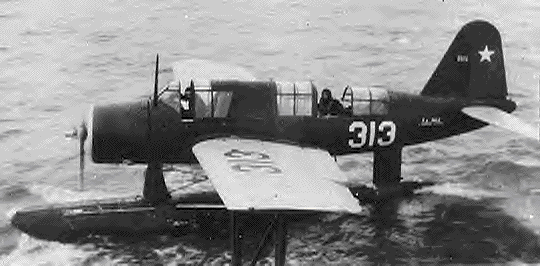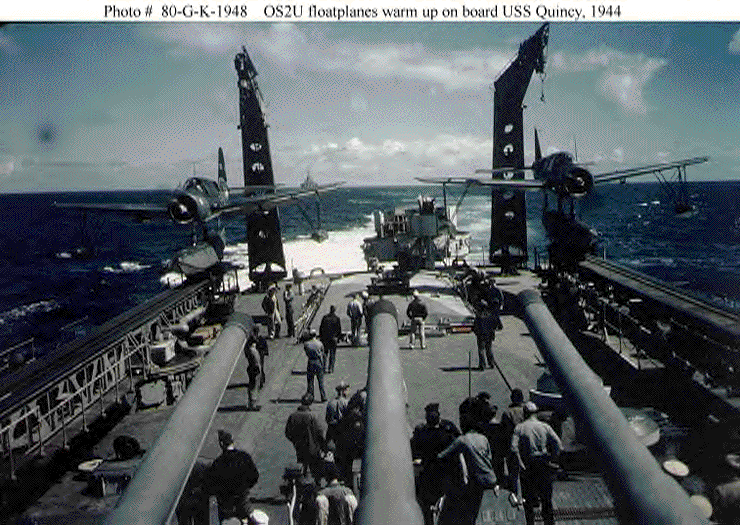Classic Combat Aircraft | home
Vought OS2U Kingfisher
The Kingfisher was the U.S. Navy's first catapult-launched monoplane observation aircraft. It came in both float and land-based configurations, and served as observer aircraft, anti-submarine aircraft, and rescue aircraft. The most famous incident involving a Kingfisher was the rescue of Captain Eddie Rickenbacker, who ditched in the Pacific in a B-17 during 1942. A Kingfisher picked up Rickenbacker and two other crew members (who still remained following a rescue the previous day) but the Kingfisher could not take off because the load was too great. The OS2U pilot taxied on the surface over 40 miles to make the nearest landfall with everyone aboard.

Type: observation aircraft
Crew: 2: Pilot, observer/gunner
Armament: one .30 cal forward firing machine gun
one .30 cal rear firing machine gun
two 100 lb.bombs, or 325 lb. depth charges
Specifications:
Length: 33' 10" (10.31 m)
Height: 15' 1.5" (4.61 m)
Wingspan: 35' 11" (10.95 m)
Weight: 6000 lb (2722 kg) max at takeoff

This Kingfisher was sent to fish of the drink, the downed pilots (six from the Enterprise, and one from the Langley) it was so heavy that the Kingfisher could not take off.
Propulsion:
Engines: 1
Powerplant: Pratt & Whitney R-985-AN-2 Wasp Junior radial
450 hp
Performance:
Range: 805 miles (1296 km)
Speed: 164 mph ( 264 km/h) at 5500 ft
Ceiling: 13,000 ft (3960 m)

(courtesy of navsource.org)